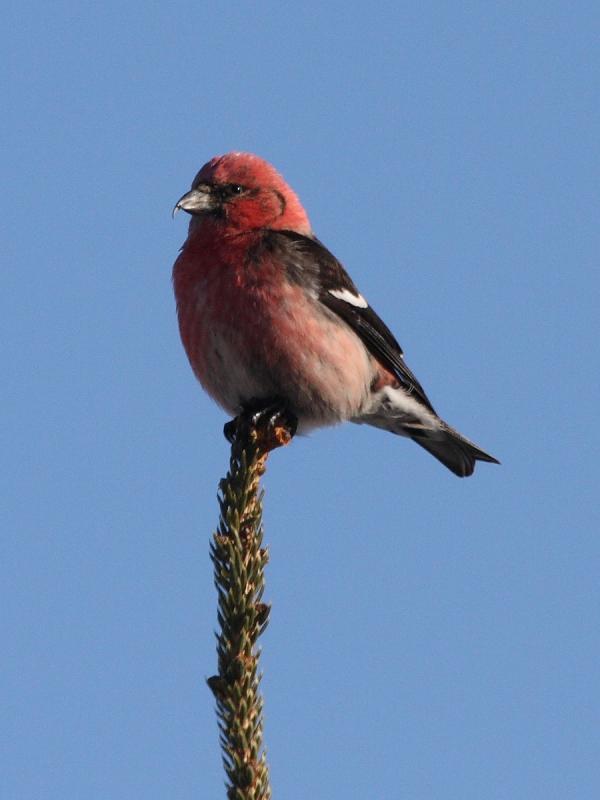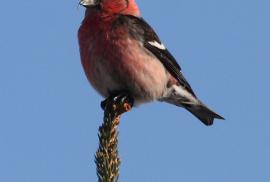Guide to Boreal Birds
Overview
White-winged Crossbills are found year-round in conifer forests wherever there are large crops of spruce or tamarack cones. With its smaller, slimmer bill, it is more dependent upon spruce cones than pines, but like the Red Crossbill it wanders widely and irregularly in search of cones and may breed at any month of the year. In years when seeds are abundant in the northern forests the birds tend to remain there. When the supply fails they come south in large numbers and may often be seen in quiet flocks, clinging to clusters of cones like little parrots. Their travels sometimes take them far to the south of their breeding range, and the species has managed to establish itself in the pine forests of Hispaniola in the West Indies. Habitat area and quality may decline substantially because the boreal forests across Canada, and especially black spruce forests, are being logged at an accelerated rate. Forestry practices that protect more forested habitat from logging, increase rotation periods, and maintain large tracts of mature forest will help maintain stable populations.
Description
6-6 1/2" (15-17 cm). Size of a largish sparrow. Mandibles crossed at tips. Male raspberry-pink; females grayer, without pink. Both sexes have 2 white wing bars.
Voice
Call like that of the Red Crossbill, but a softer chiff-chiff-chiff. Song a series of sweet canarylike warbles and trills.
Nesting
2-4 pale blue eggs, spotted with dark brown, laid in a shallow saucer of bark strips, grass, and roots lined with moss and plant down, placed near the end of a conifer branch.
Habitat
Coniferous forests.
Range/Migration
Breeds from Alaska and northern Quebec south to Newfoundland and British Columbia. In winter, south to Carolinas and Oregon. Also in Eurasia.



